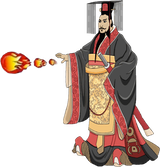this post was submitted on 15 Oct 2025
113 points (100.0% liked)
Slop.
703 readers
283 users here now
For posting all the anonymous reactionary bullshit that you can't post anywhere else.
Rule 1: All posts must include links to the subject matter, and no identifying information should be redacted.
Rule 2: If your source is a reactionary website, please use archive.is instead of linking directly.
Rule 3: No sectarianism.
Rule 4: TERF/SWERFs Not Welcome
Rule 5: No bigotry of any kind, including ironic bigotry.
Rule 6: Do not post fellow hexbears.
Rule 7: Do not individually target other instances' admins or moderators.
Rule 8: Do not post public figures, these should be posted to c/El Chisme
founded 11 months ago
MODERATORS
you are viewing a single comment's thread
view the rest of the comments
view the rest of the comments



Another fun fact: while Stalin-era USSR policies returned to "family values" and criminalizing queer identities, it is entirely inaccurate to say that the decriminalization of queerness was a "side-effect" of abolishing tsarist anti-sodomy laws. Post-October Revolution, the USSR was incredibly purposeful in not reinstating anti-sodomy laws (which were in effect in most of the world at the time). Grigorii Batkiss, the Director for the Institute of Social Hygiene in Moscow, outlined the Bolshevik stance on sexual identity in 1923: "It declares the absolute non-interference of the state and society into sexual matters, so long as nobody is injured, and no one’s interests are encroached upon." In 1925, Dr. Batkiss participated in the World League for Sexual Reform, and wrote The Sexual Revolution in Russia. The World League promoted sexual rights for men and women, abortion access, freedom from patriarchal sexual roles, and tolerance of alternative sexual lifestyles.
While concrete evidence of this part is hard to track down, Sean Egan mentions in The Bolsheviks and the Sexual Revolution that part of the Soviet reframing of marriages included secular marriages, with reports of same-sex secular marriages being established.
This was no by-product, but a concerted Soviet effort to rethink sexual identity and freedom. As for trans people: post-Revolution women were known to change their names, wear men's clothes, partner with other women, take on "men's" jobs in the military and heavy industry. And there were doctors who could apply for permission to perform rudimentary gender affirmation surgeries, as well, which were cutting edge at the time, and a result of close partnership with Herschfield's Institute.